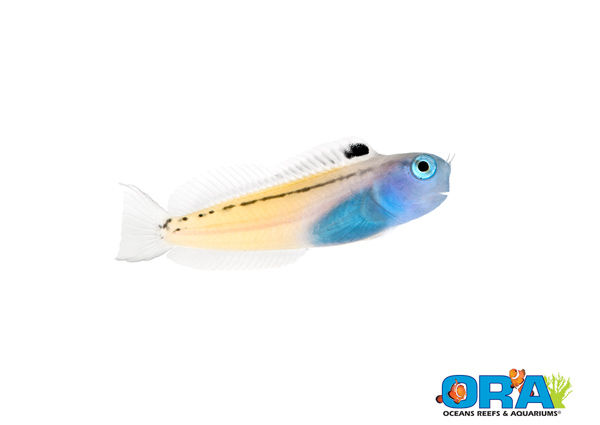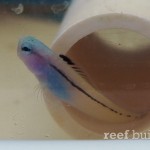Today, ORA announced the successful breeding of the Red Sea Mimic Blenny, Ecsenius gravieri, and with it, the impenetrable blenny-barrier has been broken. For years if not decades, it has seemed that the successful captive breeding of the combtooth Blennies from the genus Ecsenius couldn’t be done. While spawning these species has been relatively commonplace, rearing the offspring proved a futile, heartbreaking endeavor. Until the news out of ORA today, I am unaware of any successful reports of breeding Blennies of the genus Ecsenius, which includes some of our hobby’s favorite species like the Bicolor and Midas Blennies.
As far as how ORA pulled off this amazing feat, understandably they aren’t talking. “We’ve had plenty of experience with spawning Ecsenius species and found that once you have a compatible pair they typically spawn every few days and will tend a large nest comprised of multiple batches of eggs. Even though we’ve had access to Ecsenius eggs for years, raising the larvae had always eluded us until now.” Clearly, those efforts paid off with stunning blue and yellow results (as seen in these exclusive photos of wild and ORA captive-bred Red Sea Mimic Blennies, shot by Jake Adams last week).

To say this news is exciting is an understatement. E. gravieri hasn’t been around for years it seems. Over the year or so it has resurfaced with a price tag easily 3-5X what I paid for my original pair back around 2006. ORA offers an explanation for this high price, sharing that “The collectors are keenly aware of the demand for the Mimic but they never seem to get it right. A recent shipment of 26 Mimic Blennies to Los Angeles yielded only 3 Mimics and 23 Fang Blennies. We know of another example back in 2009 where 30 Mimics were ordered and 30 Fangs were received!”
What is this “Fang Blenny” ORA is referring to? None other than Mieacanthus nigrolineatus, the Blackline Fang Blenny (pictured above), also found in the Red Sea. As most readers will know, Fang Blennies have a venomous bite, which some have equated to a bee-sting or worse. So of course, E. gravieri perfectly mimics this venomous counterpart and presumably is avoided by predators who confuse it for M. nigrolineatus.
With both species in cultivation, hobbyists out there can build a tank I honestly had planned to do in my basement fishroom – a dream tank showing the two species, original and impostor, side by side, assuming they’ll get along (we’re not aware of anyone who has placed the two species together…we assume they’ll coexist however)! And now, thanks to ORA’s dedication to breeding advancements, you can create this Red Sea biotoped and mimicry themed pairing with captive-bred versions of both species. ORA tells us that availability of the Red Sea Mimic Blenny will remain limited until more broodstock comes online, but the Blackline Fang Blenny is routinely available.
We can assume that ORA will be applying their proprietary knowledge of Ecsenius breeding to investigate many rare, expensive, or impossible to find species from this genus. Another plus – up until now we’ve had very limited choices for herbivorous fishes if an aquarist wanted to stick exclusively to species that were captive bred. With this blenny-barrier breakthrough, our list of captive-bred grazers grew by one, but that could change if ORA brings on ever more combtooth blenny species (to name a few we’d love to see, how about E. pictus, E. oculus, or even the outrageous E. tigris)!
Thanks to ORA for the images and congratulations on another breakthrough! You can read more on their blog.








